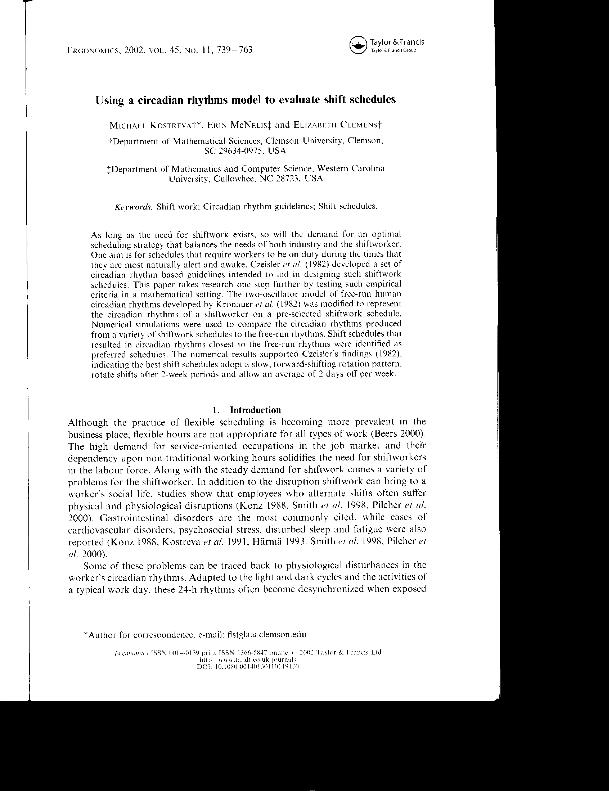Using a circadian rhythms model to evaluate shift schedules

Contenido multimedia no disponible por derechos de autor o por acceso restringido. Contacte con la institución para más información.
| Tag | 1 | 2 | Valor |
|---|---|---|---|
| LDR | 00000nab a2200000 i 4500 | ||
| 001 | MAP20071506212 | ||
| 003 | MAP | ||
| 005 | 20080418125007.0 | ||
| 007 | hzruuu---uuuu | ||
| 008 | 041210e20020901gbr|||| | |00010|eng d | ||
| 035 | $a6800012720 | ||
| 040 | $aMAP$bspa | ||
| 084 | $a875 | ||
| 100 | 1 | $0MAPA20080197384$aKostreva, Michael | |
| 245 | 1 | 0 | $aUsing a circadian rhythms model to evaluate shift schedules$cMichael Kostreva, Erin McNelis, Elisabeth Clemens |
| 520 | 8 | $aAs long as we need for shiftwork exits, so will the demand for an optimal scheduling strategy that balances the need of both industry and the shiftworker. This paper takes research one step further by testing such empirical criteria in a mathematical setting | |
| 650 | 1 | 1 | $0MAPA20080588458$aTrabajo por turnos |
| 650 | 1 | 1 | $0MAPA20080577940$aRitmo circadiano |
| 650 | 1 | 1 | $0MAPA20080547127$aEstudios |
| 650 | 1 | 1 | $0MAPA20080553401$aBiorritmos |
| 700 | 1 | $0MAPA20080077709$aMcNelis, Erin | |
| 700 | 1 | $0MAPA20080215354$aClemens, Elisabeth | |
| 740 | 0 | $aErgonomics | |
| 773 | 0 | $tErgonomics$dLondon and Washington$gVol. 45, nº 11, September 2002 ; p. 739-763 |

